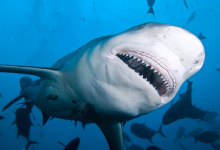Garry Nelson's Left Foot
Well-known member
Group B. You have one vote so use it wisely. We're looking for the hardest pound for pound creature. That doesn't necessarily equate to the largest.
Feel free to argue the case of your chosen beast, photos and videos are always welcome and, in fact, are encouraged.
So, without further ado, Group B's combatants are:
Orca

The Orca is a two time finalist and former winner(2011). Due to its size it is undeniably the daddy of the sea, bossing all around it. They have a variety of ways in which they kill their prey, including headbutting, throwing their victim in the air, hitting it with their incredibly powerful tail, breaching and landing on them. They have even been known to beach themselves temporarily to get at their victims, they also occasionally hunt terrestrial animals and its been speculated(based on the contents of their stomachs) that they cannibalise other Orcas.
http://en.wikipedia.org/wiki/Killer_whale#Feeding
Giraffe

The Giraffe is making its debut in the WHC contest. You'd imagine it will struggle to make an impact, even in this the weaker of the four groups. Not known as an especially violent or aggressive species the Giraffe nevertheless does possess one potent weapon: it's powerful neck. When establishing who the alpha male is, two male giraffes will engage in something known as 'necking'. The most violent form of 'necking involves the two Giraffes trying to wallop each other as hard as they can with their necks. It doesn't usually lead to serious injury, although deaths have been recorded. Interestingly, after necking, the two males will often caress and court each other, culminating in mounting and climaxing. Interesting.
http://en.wikipedia.org/wiki/Giraffe#Behavior_and_ecology
Immortal Jellyfish
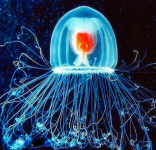
The immortal jellyfish's main claim to fame is in it's name: it's immortal. At least theoretically. Whilst thats pretty damn amazing I'm not sure if it's enough for it to genuinely compete in this contest. It will need some determined championing if it is to progress.
http://en.wikipedia.org/wiki/Turritopsis_dohrnii
Poison Dart Frog
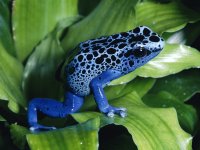
This tiny little creature(can be as small as 1.5cm) is a brightly coloured beast who secretes a poisonous toxin through their skin thus allowing them to live side by side with would be potential predators. Their toxins have been used to coat arrow heads by the indigenous Amerindians of central and southern america.
http://en.wikipedia.org/wiki/Poison_dart_frog
Cockroach
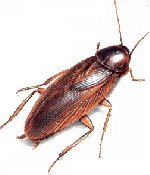
Horrible little *******, the cockroach. Speedy, trails shit after it and can survive pretty much everything, including beheading and nuclear fallout. That said, can't survive an attack of 'Kabi Killer', a mold killing spray that dries out their exoskeleton and kills them within seconds. So can survive nuclear war and no head but not having their bodies sprayed with mold killer. Hard or not? You decide.
http://en.wikipedia.org/wiki/Cockroach
Mongoose
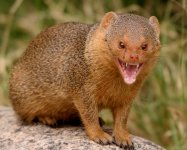
Another tough little bugger. Small and powerful it regularly takes on and kills poisonous snakes. Like the Honeybadger and Wolverine it possesses a tough, thick skin to protect it from bites whilst it also has some immunity to the neurotoxins in snake venom. It is illegal to import them into North Americ due to the damage they due to the local fauna and eco system.
http://en.wikipedia.org/wiki/Mongoose
Shrew
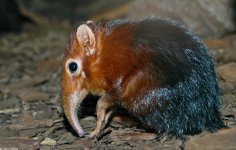
The Shrew is making its debut in the WHC. It looks a little bit like fingermouse but don't let that put you off, it is fiercely territorial and will fight to defend its territory. Whether thats enough for it to make an impact is up to you, the voter.
http://en.wikipedia.org/wiki/Shrew
Deathstalker Scorpion
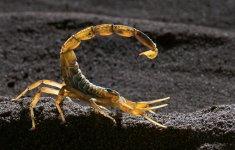
This tiny beast(on average just under 6cm) has a highly powerful venom in its sting. While healthy adults aren't in too much danger from the sting, children or elderly are at risk of death if stung by the death stalker. They become highly aggressive when they become nervous or agitated.
http://en.wikipedia.org/wiki/Deathstalker
Bull Shark
View attachment 61971***I couldnt post a picture here....so theres one in the post directly below***
The second shark in this years competition. Like the GWS the bull shark, despite a fearsome reputation, has made little impact on the WHC in previous years. Maybe this year will be different. Equally comfortable in salt water and fresh water this beast likes nothing better than cruising in shallow water. Highly aggressive it is responsible for the majority of near shoreline shark attacks, even those attributed to other shark species. Averaging 2.2-2.4metres in length they possess the highest bite force of any cartilaginous fish. They will attack and eat anything up to and including other bull sharks.
http://en.wikipedia.org/wiki/Bull_shark
Blue Ringed Octopus
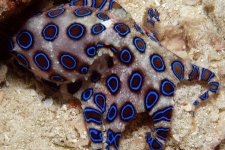
This little feller is one of the marine worlds most dangerous beasts despite its small size and relatively docile manner. If provoked it will go for you using its tentacles to grab hold of you, pulling you in towards its sharp bony mouth where it will bite you, releasing powerful venom that paralyses the muscles needed for breathing and movement.
http://en.wikipedia.org/wiki/Blue-ringed_octopus
Tasmaninan Devil
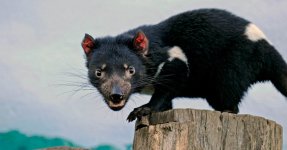
Another small, powerful beast the Tasmaninan Devil is the size of a small dog. Heavily muscled it is the largest carnivorous marsupial in the world. The Tasmanian devil's large head and neck allow it to generate amongst the strongest bite per unit body mass of any extant mammal land predator, it also makes a terrifying loud screech and is ferocious when eating. It will hunt prey up to the size of small kangaroos. Devils can dig to forage corpses, in one case digging down to eat the corpse of a buried horse that had died due to illness. They are known to eat animal cadavers by first ripping out the digestive system, which is the softest part of the anatomy, and they often reside in the resulting cavity while they are eating. Tasmanian devils can eliminate all traces of a carcass of a smaller animal, devouring the bones and fur if desired.
http://en.wikipedia.org/wiki/Tasmanian_devil
Feel free to argue the case of your chosen beast, photos and videos are always welcome and, in fact, are encouraged.
So, without further ado, Group B's combatants are:
Orca

The Orca is a two time finalist and former winner(2011). Due to its size it is undeniably the daddy of the sea, bossing all around it. They have a variety of ways in which they kill their prey, including headbutting, throwing their victim in the air, hitting it with their incredibly powerful tail, breaching and landing on them. They have even been known to beach themselves temporarily to get at their victims, they also occasionally hunt terrestrial animals and its been speculated(based on the contents of their stomachs) that they cannibalise other Orcas.
http://en.wikipedia.org/wiki/Killer_whale#Feeding
Giraffe

The Giraffe is making its debut in the WHC contest. You'd imagine it will struggle to make an impact, even in this the weaker of the four groups. Not known as an especially violent or aggressive species the Giraffe nevertheless does possess one potent weapon: it's powerful neck. When establishing who the alpha male is, two male giraffes will engage in something known as 'necking'. The most violent form of 'necking involves the two Giraffes trying to wallop each other as hard as they can with their necks. It doesn't usually lead to serious injury, although deaths have been recorded. Interestingly, after necking, the two males will often caress and court each other, culminating in mounting and climaxing. Interesting.
http://en.wikipedia.org/wiki/Giraffe#Behavior_and_ecology
Immortal Jellyfish

The immortal jellyfish's main claim to fame is in it's name: it's immortal. At least theoretically. Whilst thats pretty damn amazing I'm not sure if it's enough for it to genuinely compete in this contest. It will need some determined championing if it is to progress.
http://en.wikipedia.org/wiki/Turritopsis_dohrnii
Poison Dart Frog

This tiny little creature(can be as small as 1.5cm) is a brightly coloured beast who secretes a poisonous toxin through their skin thus allowing them to live side by side with would be potential predators. Their toxins have been used to coat arrow heads by the indigenous Amerindians of central and southern america.
http://en.wikipedia.org/wiki/Poison_dart_frog
Cockroach

Horrible little *******, the cockroach. Speedy, trails shit after it and can survive pretty much everything, including beheading and nuclear fallout. That said, can't survive an attack of 'Kabi Killer', a mold killing spray that dries out their exoskeleton and kills them within seconds. So can survive nuclear war and no head but not having their bodies sprayed with mold killer. Hard or not? You decide.
http://en.wikipedia.org/wiki/Cockroach
Mongoose

Another tough little bugger. Small and powerful it regularly takes on and kills poisonous snakes. Like the Honeybadger and Wolverine it possesses a tough, thick skin to protect it from bites whilst it also has some immunity to the neurotoxins in snake venom. It is illegal to import them into North Americ due to the damage they due to the local fauna and eco system.
http://en.wikipedia.org/wiki/Mongoose
Shrew

The Shrew is making its debut in the WHC. It looks a little bit like fingermouse but don't let that put you off, it is fiercely territorial and will fight to defend its territory. Whether thats enough for it to make an impact is up to you, the voter.
http://en.wikipedia.org/wiki/Shrew
Deathstalker Scorpion

This tiny beast(on average just under 6cm) has a highly powerful venom in its sting. While healthy adults aren't in too much danger from the sting, children or elderly are at risk of death if stung by the death stalker. They become highly aggressive when they become nervous or agitated.
http://en.wikipedia.org/wiki/Deathstalker
Bull Shark
View attachment 61971***I couldnt post a picture here....so theres one in the post directly below***
The second shark in this years competition. Like the GWS the bull shark, despite a fearsome reputation, has made little impact on the WHC in previous years. Maybe this year will be different. Equally comfortable in salt water and fresh water this beast likes nothing better than cruising in shallow water. Highly aggressive it is responsible for the majority of near shoreline shark attacks, even those attributed to other shark species. Averaging 2.2-2.4metres in length they possess the highest bite force of any cartilaginous fish. They will attack and eat anything up to and including other bull sharks.
http://en.wikipedia.org/wiki/Bull_shark
Blue Ringed Octopus

This little feller is one of the marine worlds most dangerous beasts despite its small size and relatively docile manner. If provoked it will go for you using its tentacles to grab hold of you, pulling you in towards its sharp bony mouth where it will bite you, releasing powerful venom that paralyses the muscles needed for breathing and movement.
http://en.wikipedia.org/wiki/Blue-ringed_octopus
Tasmaninan Devil

Another small, powerful beast the Tasmaninan Devil is the size of a small dog. Heavily muscled it is the largest carnivorous marsupial in the world. The Tasmanian devil's large head and neck allow it to generate amongst the strongest bite per unit body mass of any extant mammal land predator, it also makes a terrifying loud screech and is ferocious when eating. It will hunt prey up to the size of small kangaroos. Devils can dig to forage corpses, in one case digging down to eat the corpse of a buried horse that had died due to illness. They are known to eat animal cadavers by first ripping out the digestive system, which is the softest part of the anatomy, and they often reside in the resulting cavity while they are eating. Tasmanian devils can eliminate all traces of a carcass of a smaller animal, devouring the bones and fur if desired.
http://en.wikipedia.org/wiki/Tasmanian_devil
Last edited:

